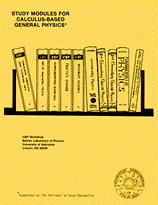Instructional Materials in Physics and Astronomy
Date of this Version
1975
Abstract
Seldom has a development in science captured the attention of the general populace to the extent that Einstein's special theory of relativity did. Once, after giving a public lecture, Einstein was on the way to the railroad depot when he was asked to summarize his theory in one sentence, in a way the general public could understand. His reply: "When does the station get to the train?" Many of the predictions of the theory violate common sense -- lengths change, times change, masses change, depending on who is looking -- but the theory has been proved correct whenever it has been tested.
At the end of the nineteenth century, Newtonian mechanics and Maxwell's electromagnetic theory seemed to explain all physical phenomena, and some scientists believed that physics as a creative science was finished! Yet there was a serious gap: the ether, the postulated medium necessary for the propagation of electric and magnetic fields, appeared to have several incompatible properties. To resolve the ether problem, Einstein reformulated theoretical physics by introducing an operational approach that made use of light signals propagating at the speed c = 3.00 x 108 m/s relative to all inertial frames. This approach replaced the view that space and time have certain absolute properties, as assumed by Newton and his successors.
Incidentally, the "special" in special theory of relativity refers to the fact that only uniform relative motion is considered. Accelerated reference frames, such as those attached to projectiles, are not treated in the special theory of relativity, but are the subject of Einstein's general theory.


Comments
From Study Modules for Calculus-Based General Physics
Copyright © 1975 CBP Workshop, University of Nebraska–Lincoln.
Reproduction rights granted.